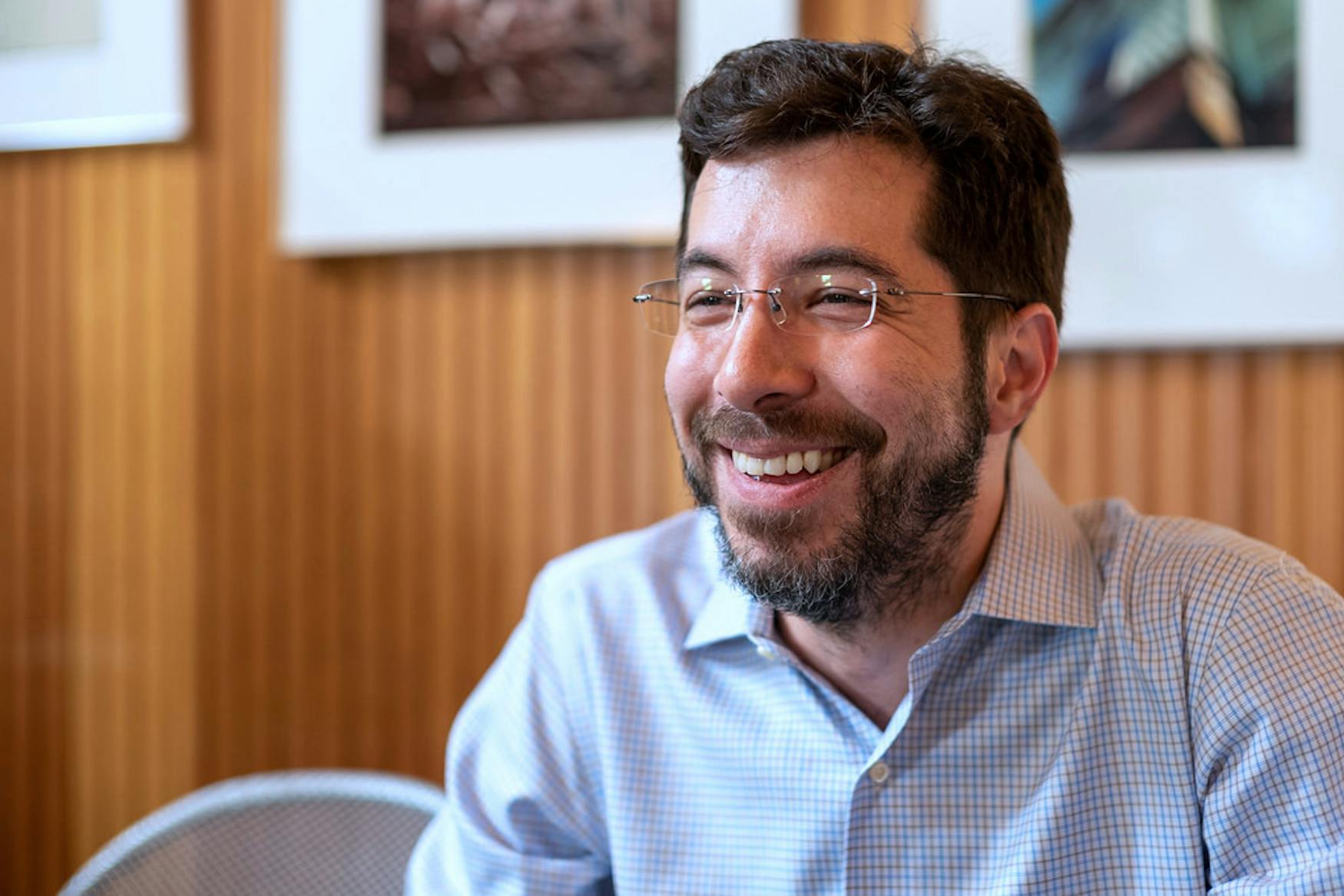The abstracts of inventing with a purpose: Brandeis Effective Altruism hosts Dr. Ed Boyden
The MIT professor and researcher explained the process that led to him working on groundbreaking new technology to navigate the brain.
According to an article from Gettysburg College, the average person will spend around 90,000 hours of their life working. While this is a depressing statistic for many, Dr. Ed Boyden showed how these hours can be used to put good in the world during a Feb. 8 guest lecture hosted by Brandeis Effective Altruism. According to their website, effective altruism is a “social movement that aims to find the best ways to help others through the use of evidence and careful reasoning.” In the past, Boyden worked on neuroimaging technology and its numerous applications in healthcare. In addition to being a professor at the Massachusetts Institute of Technology, Boyden is a member of the National Academy of Sciences and an investigator at both MIT’s McGovern Institute and the Howard Hughes Medical Institute.
During his talk, Boyden referenced two of his major research endeavors: optogenetics and expansion microscopy. Optogenetics is the study of brain circuits that can be controlled with light. In August 2005, Boyden and his coworkers Paul W. Tillberg and Fei Chen submitted one of the first papers that used opsins — light-sensitive organisms — as tools to manipulate neural systems. As Boyden describes in a National Library of Medicine report, optogenetic tools are currently being used in topics from “Parkinson’s disease to fear to cortical dynamics.” Additionally, optogenetic tools hold immense promise in helping to restore sight in the visually impaired.
Boyden has also worked on major innovations in neuroimaging, specifically on a technique called expansion microscopy. By using a polyelectrolyte gel that Boyden described as “similar to the material diapers are made of,” he, Chen and Tillberg were able to develop a method to expand tissue specimens so they can be observed at a higher resolution. An article from the McGovern Institute explains the plethora of potential uses for this technology, including as a diagnostic tool for aggressive forms of brain cancer.
To start his talk, Boyden explained his background and philosophy. He earned his undergraduate degrees in physics, electrical engineering and computer science at MIT and his PhD in neuroscience at Stanford University, which allowed Boyden to develop a reductionist philosophy that he applied to his work process. In other words, Boyden has pinpointed the most basic steps he uses in his process of inventing: Pick a problem, deconstruct and analyze the problem, and finally, figure out how to solve it.
As Boyden sees it, choosing a problem is not always as simple as it seems. “Sometimes in science we talk ourselves out of obvious problems,” he said. “Sometimes because they’re too obvious, sometimes because they’re too difficult.” When a chosen problem seems daunting, that’s when the second step — learning about and analyzing the problem — kicks in.
Boyden’s method is reliant on breaking the problem down into more manageable parts so that one can “see, control, and map everything we want to build.” Boyden emphasized that even when breaking down a problem into smaller and smaller steps, it’s important not to lose sight of the original problem.
During the analysis step, Boyden also described a thought process he calls the “tiled tree method,” wherein one takes each step to a problem and “chops” it into two parts. This strategy creates multiple solutions and therefore multiple possibilities for a correct solution, making it an efficient problem-solving method. Boyden calls this thought process a “tiled tree” because a visual representation of these growing solutions would expand top to bottom, resembling a pine tree.
Boyden also described a concept which he calls “luck optimization.” While he accepts that there is an element of luck that is purely random, Boyden believes that there are ways to increase the amount of “luck” that one has while trying to solve a problem. For example, the reason that Boyden and his coworkers were able to experiment with the genomes they needed — which were at the time incredibly expensive — was because they knew someone with connections to a lab holding them in China. During the Q&A section of his talk, Boyden cited universities as excellent places to optimize “luck” due to the wide network one can form at a university.

If Boyden’s talk boiled down to one idea, it would be “try as many angles as humanly possible.” Multiple times during the talk he emphasized the need to “[turn] things upside down” to solve a problem, trying the opposite of what others have been pursuing and leaving no stone left unturned during the inventing process. In addition to environment and connections, methods like the tile tree that increase the amount of possible solutions also increase the possibility of a correct solution. This means that thinking creatively is also a part of “luck optimization.”
Currently, Boyden is working on a software that would simulate actual brains, starting with worms, small fish and mice. He hopes to use light signals to figure out how each signal interacts with the others, all contributing to a large and complex map of the brain’s functions.



Please note All comments are eligible for publication in The Justice.